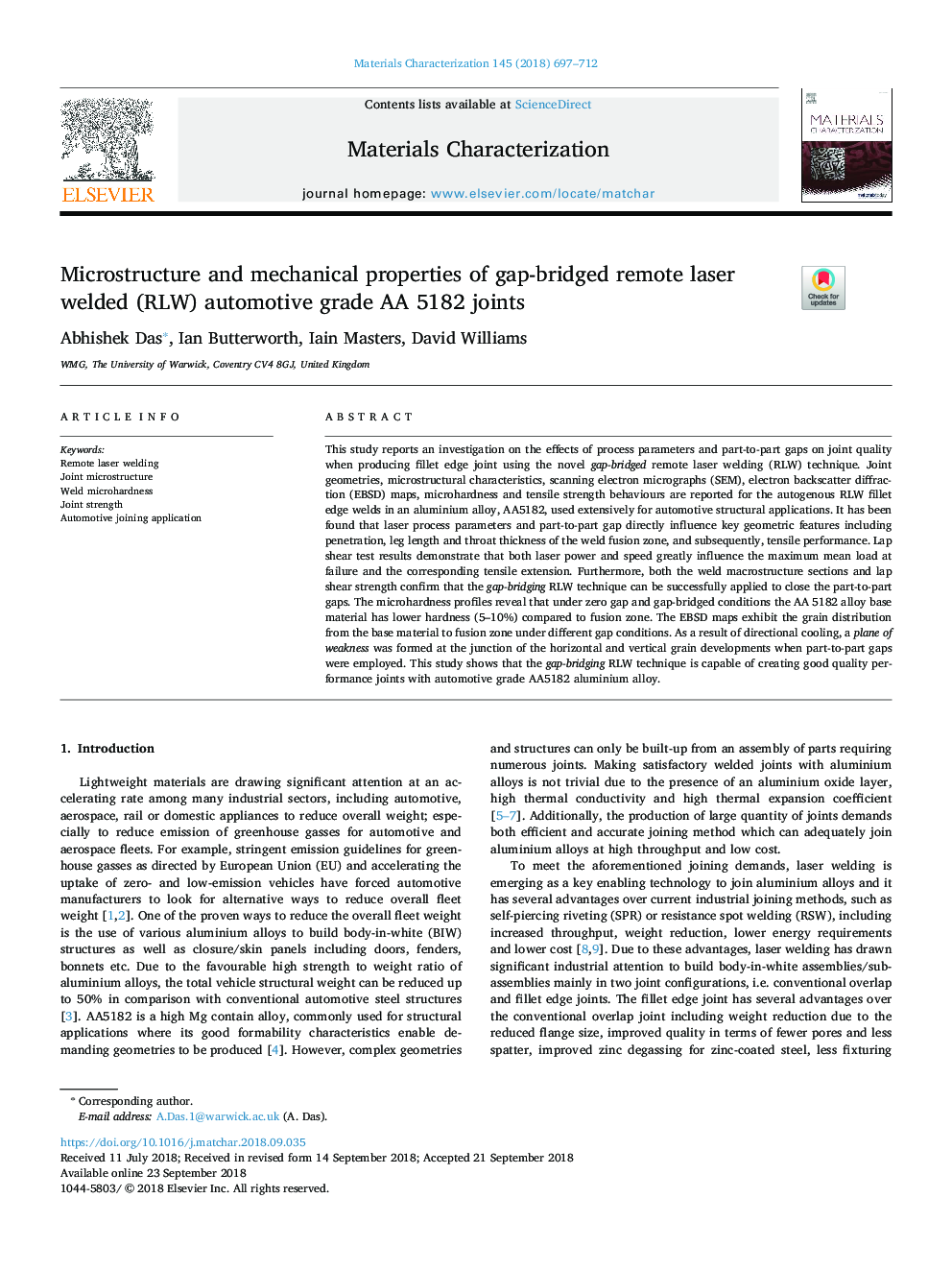| Article ID | Journal | Published Year | Pages | File Type |
|---|---|---|---|---|
| 11032797 | Materials Characterization | 2018 | 16 Pages |
Abstract
This study reports an investigation on the effects of process parameters and part-to-part gaps on joint quality when producing fillet edge joint using the novel gap-bridged remote laser welding (RLW) technique. Joint geometries, microstructural characteristics, scanning electron micrographs (SEM), electron backscatter diffraction (EBSD) maps, microhardness and tensile strength behaviours are reported for the autogenous RLW fillet edge welds in an aluminium alloy, AA5182, used extensively for automotive structural applications. It has been found that laser process parameters and part-to-part gap directly influence key geometric features including penetration, leg length and throat thickness of the weld fusion zone, and subsequently, tensile performance. Lap shear test results demonstrate that both laser power and speed greatly influence the maximum mean load at failure and the corresponding tensile extension. Furthermore, both the weld macrostructure sections and lap shear strength confirm that the gap-bridging RLW technique can be successfully applied to close the part-to-part gaps. The microhardness profiles reveal that under zero gap and gap-bridged conditions the AA 5182 alloy base material has lower hardness (5-10%) compared to fusion zone. The EBSD maps exhibit the grain distribution from the base material to fusion zone under different gap conditions. As a result of directional cooling, a plane of weakness was formed at the junction of the horizontal and vertical grain developments when part-to-part gaps were employed. This study shows that the gap-bridging RLW technique is capable of creating good quality performance joints with automotive grade AA5182 aluminium alloy.
Related Topics
Physical Sciences and Engineering
Materials Science
Materials Science (General)
Authors
Abhishek Das, Ian Butterworth, Iain Masters, David Williams,
